Buying a powerful tool and actually using it for a powerful result are two very different things. It’s like owning a state-of-the-art gym membership but only ever using the treadmill. You’re leaving most of the value on the table.
This is the exact situation for most people who use Rank Math Pro. They don’t know how to Set up Rank Math Pro for maximum SEO impact.
It's no accident that savvy bloggers, sharp digital marketers, and growing eCommerce sites have made it one of the most popular SEO toolkits for WordPress. It promises to be a Swiss Army knife for on-page and technical SEO, and frankly, it delivers.
But here’s the uncomfortable truth:
If you're serious about SEO, simply installing the plugin is not enough. How you configure it is the difference between ranking on page one and getting buried in the digital noise.
The power isn't in having Rank Math Pro. The power is in deploying it correctly. It's in knowing which modules to activate, which settings to tweak, and which features to ignore for your specific goals.
That’s what we’re going to do today.
Forget the generic setup wizard. We're going to dive deeper and configure Rank Math Pro for maximum SEO impact, turning that raw potential into what you actually want: more traffic, more leads, and more customers.
Let's tune this engine.
Rank Math is your all-in-one WordPress SEO plugin, effortlessly optimizing your site to rank higher and attract more organic traffic.
How to Set Up Rank Math Pro for Maximum SEO Impact
Setting up Rank Math Pro is one of the smartest moves you can make to supercharge your WordPress SEO. Whether you're upgrading from the free version or starting fresh, this guide will walk you through each step — from installation to optimizing your site for maximum visibility. Let’s get started.
Step 1: Install and Activate Rank Math Pro
Alright, first things first. We can't tune the engine until it's properly installed. This part is simple, but getting it right prevents major headaches down the road.
Your goal here isn't just to add a plugin. It's to create a clean foundation for all your future SEO efforts.
Getting the Right Files
If you haven't already, head over to the official Rank Math website to purchase and download your copy of the Pro plugin.
Keep in mind, Rank Math Pro is an add-on. It works on top of the free version available in the WordPress repository. You will need both, but the setup process handles this seamlessly.
Once you have your .zip file for the Pro version downloaded, you're ready.
Activation: The Right Way
Inside your WordPress dashboard, do the following:
Simple. But before you move on, we need to address the most common mistake people make.
A Critical Prerequisite: One Plugin to Rule Them All
Listen carefully, because this is non-negotiable.
Before you proceed, you must deactivate and delete any other SEO plugins you have running.
I’m talking about Yoast, All in One SEO, SEOPress—anything that handles titles, meta descriptions, or XML sitemaps.
Why? Because running two SEO plugins at once is like having two drivers fighting for the same steering wheel. It creates technical conflicts, duplicate metadata, and unpredictable results that can seriously damage your SEO.
It's a mess. Don't do it.
And don't worry about losing your data. During the setup wizard (which we'll get to next), Rank Math has a brilliant one-click importer that will safely pull in all your settings from your old plugin.
You lose nothing and gain a clean, powerful setup.
Step 2: Navigating the Setup Wizard Like a Pro
Once you activate the plugins, Rank Math will prompt you to start its Setup Wizard.
This isn't just a series of checkboxes to get through. This is your first strategic conversation with the plugin. It's where you tell it—and by extension, Google—exactly what your website is and what it aims to achieve.
Don't just click through it. Let's be deliberate.
Your First Decision: Choose "Advanced"
The first choice it gives you is crucial: Easy, Advanced, or Custom Mode.
Let me make this simple for you.
Always choose Advanced.
The "Easy" mode is for people who want to set it and forget it... and get mediocre results. You're reading this because you want maximum impact. Advanced mode is where that happens. It unlocks the essential controls you need without being overwhelming.
(We're not touching Custom Mode; that's for developers with very specific, unusual needs.)
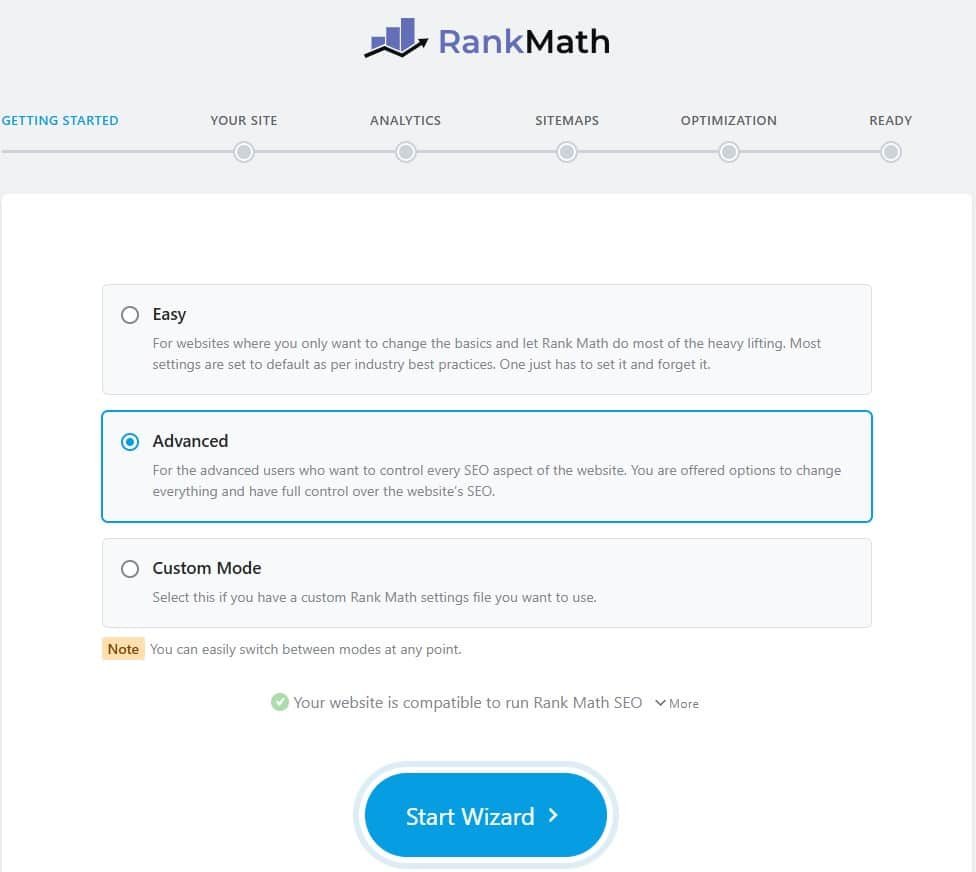
Once you're in Advanced mode, you'll be guided through a few key sections. Here’s what matters:
Here you'll tell Rank Math what kind of site you run (e.g., Personal Blog, Small Business Site, Webshop). Be honest. This choice influences the type of Schema markup—the language of search engines—that Rank Math applies globally. You'll also upload your logo, which is critical for your brand's presence in search results.
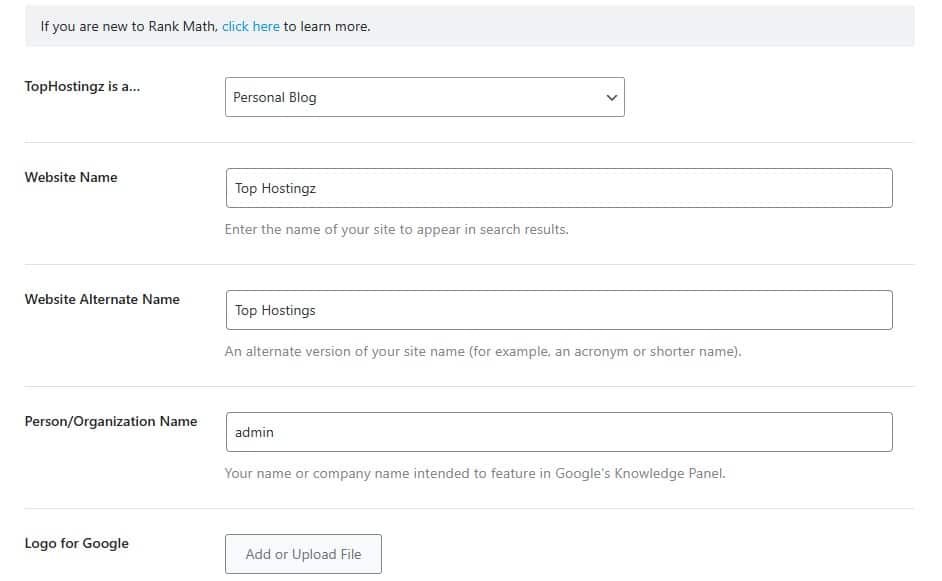
Connect your Google Search Console and Google Analytics accounts. Don't skip this. Refusing to look at your data is like trying to navigate a ship in the dark. Rank Math uses this connection to pull valuable performance metrics right into your WordPress dashboard, saving you time and giving you a constant feedback loop.
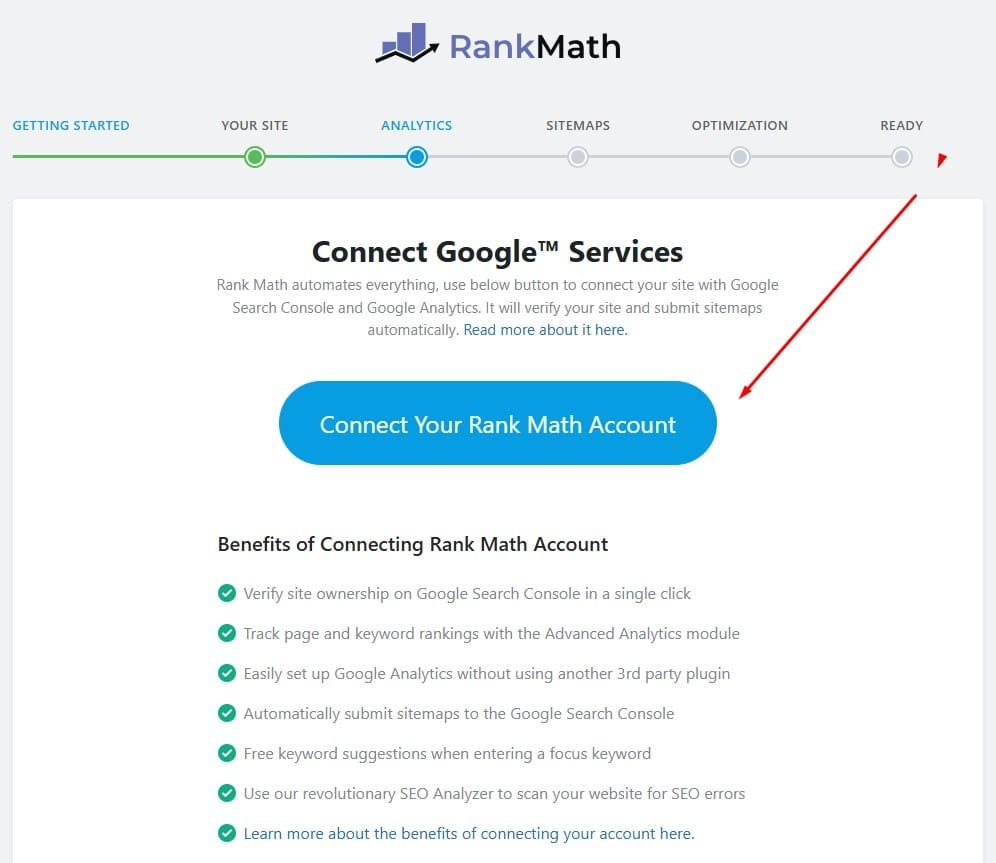
Just say yes. Turn the Sitemap on and ensure ‘Include Images’ is checked. Images are a valuable source of traffic. By default, Rank Math will create a clean, efficient sitemap that's far better than the default WordPress one. We'll fine-tune this later, but for now, enabling it is the correct move.
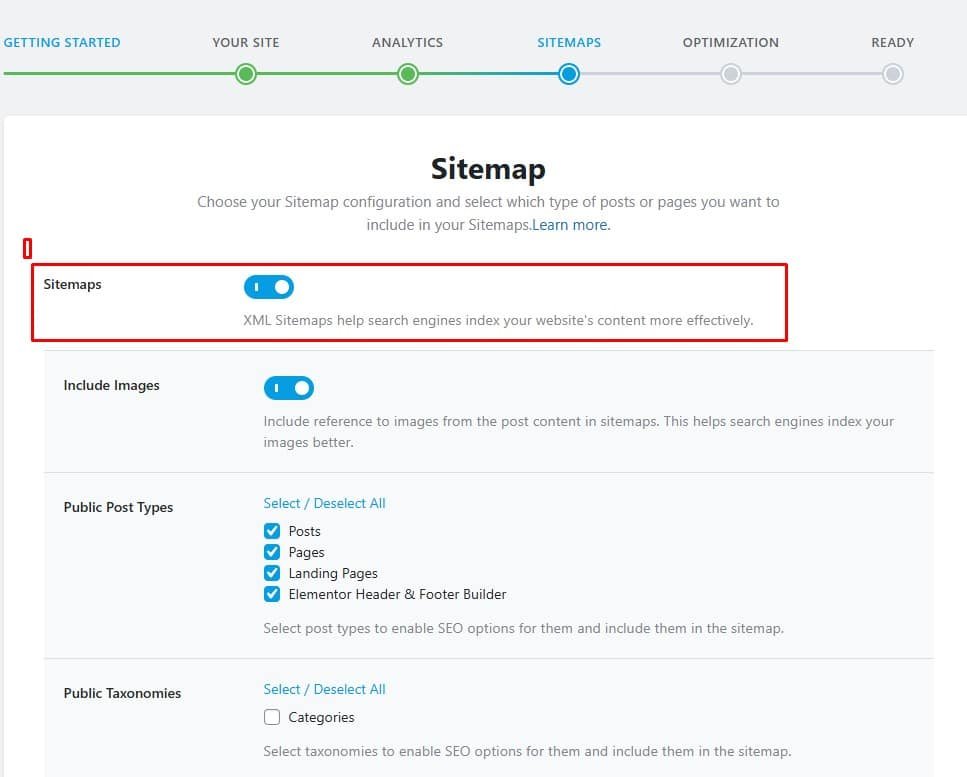
This section offers a few quick wins. Here are my recommendations:
Absolutely, yes. An empty archive page is thin content. It signals to Google that parts of your site are low-quality or unfinished. Turning this on prevents that from ever being an issue.
Generally, no. You don't need a blanket 'nofollow' on all outbound links. Modern SEO recognizes that linking out to authoritative sources is a sign of a healthy, confident site. We'll handle specific 'nofollow' situations on a case-by-case basis.
Yes. This is a user experience win. It keeps visitors on your site while still allowing them to check out your recommended resources.
Once you save and continue through these steps, the basic configuration is done. The wizard has done the heavy lifting. But the real optimization—the part that most people miss—happens in the modules. That's where we're headed next.
Step 3: Connect Your Account to Unlock the Real Power
After finishing the setup wizard, it's tempting to dive right into writing your next post. You feel like the "setup" is done.
Hold on. There's one more quick, but non-negotiable, step.
You'll see a prompt asking you to connect your free Rank Math account to activate your Pro license. This isn't just a marketing gimmick or a way to get you on an email list.
Skipping this step is like paying for a first-class ticket and then sitting in economy. You're voluntarily leaving the best features behind.
The Pro version of Rank Math isn't just a plugin; it's a service. The most powerful features require a connection to Rank Math's servers to function. By connecting your account, you're flipping the switch that turns them on.
What You're Actually Activating
Here’s a taste of what you lose if you don't connect your account:
The 30-Second Connection Process
Thankfully, this is incredibly easy.
Click the "Connect Your Account" button on the prompt in your WordPress dashboard.
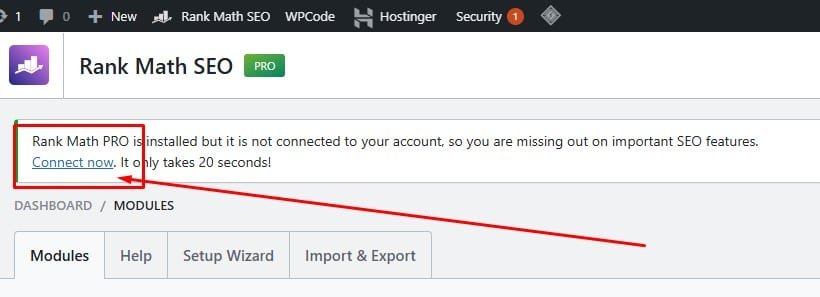
You'll be redirected to the Rank Math login page. Log in with the same credentials you used to purchase the Pro plan.

You'll see a confirmation screen asking you to authorize the connection to your website. Click "OK" or "Activate." That's it. You're done. Your site will be redirected back to your dashboard, but now it's fully armed. Now that the plugin is fully operational, let’s choose our weapons by configuring the modules.

Step 4: Dialing in Your General Settings for SEO Success
The setup wizard got you in the game. Now, we start playing to win.
The "General Settings" area in Rank Math isn't a junk drawer of miscellaneous options. Think of it as your site's digital business card. It’s how you present yourself to Google and to the humans who see your links on social media.
Getting this right is about establishing authority and trust before they even click. You can find these settings under Rank Math SEO > General Settings. Let’s tackle the essentials.
1. Site Identity: Your Digital Handshake
This is about brand consistency. You want your site to look professional and instantly recognizable, whether it shows up in a Google search or a Facebook feed.
2. Links: Controlling Your SEO Footprint
These settings might seem small, but they have a significant impact on how search engines crawl your site and how link equity flows.
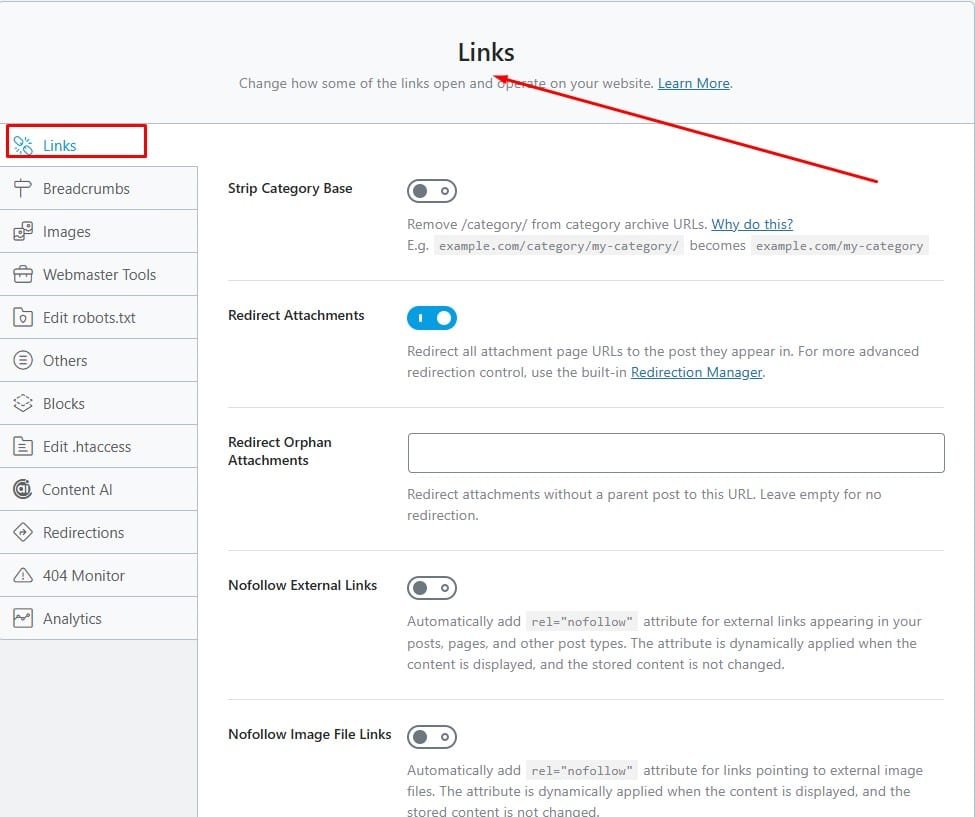
Nofollow External Links: We discussed this in the wizard. The advice stands: keep this turned off. You want to link out to great resources. It’s good for your readers and it’s a positive signal to Google. Handle specific nofollow links on a case-by-case basis within the post editor itself.
Redirect Attachments: Turn this on immediately. This is a huge, often-overlooked SEO win. By default, every image you upload to WordPress gets its own "attachment page"—a thin, useless page with just a header, a footer, and the image. These are zombie pages that offer no value and can dilute your SEO. Enabling this setting automatically redirects anyone who stumbles upon that URL to the actual post or page where the image is used. It cleans up your site architecture instantly.
3. Breadcrumbs: The Overlooked User Experience Win
Breadcrumbs are the small trail of links you often see at the top of a page, like Home > Blog > Your Post Title.
Let me be clear: you should enable them.
Why? Two reasons:
- User Experience: They help your visitors understand where they are on your site and allow them to easily navigate back to previous sections. A user who isn't lost is a user who stays longer.
- SEO: They give search engines a clear map of your site's structure. Google loves structure, and it often displays these breadcrumbs directly in the search results, making your listing more attractive and easier to understand.
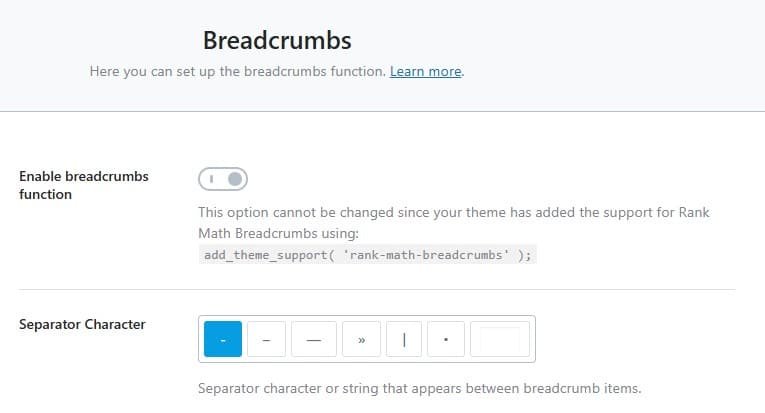
Simply toggle the function on. Rank Math will provide you with a small shortcode and instructions on how to add it to your theme if it doesn't appear automatically. It’s a five-minute job for a permanent benefit.
Setting up Breadcrumbs in Rank Math is incredibly straightforward. It's a built-in feature with a user-friendly interface. You simply enable it with a toggle, and Rank Math automatically generates them based on your site's structure, adding the necessary Schema.org markup for search engines. While easy for basic setup, it also offers clear options for customization like separators or homepage text.
4. Analytics: Closing the Feedback Loop
If you didn't connect your Google Search Console and Google Analytics during the setup wizard, do it now.
You can't improve what you don't measure.
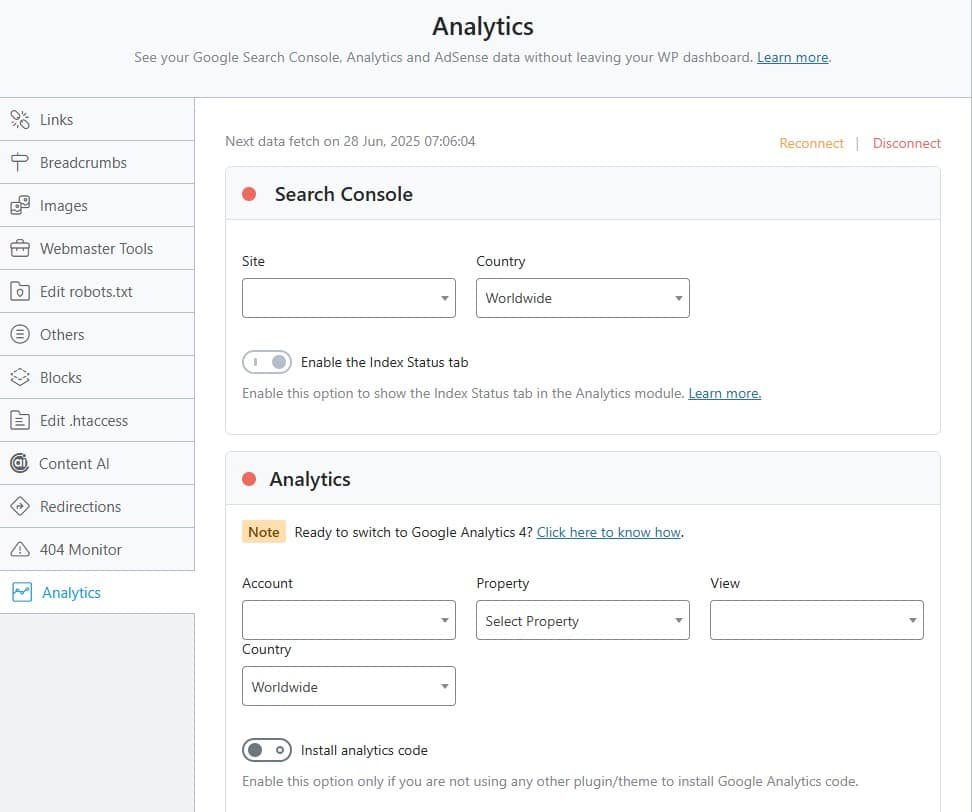
This integration isn't just for show. It pulls your most important performance data—your rankings, traffic, and top keywords—directly into your WordPress dashboard. It puts the results of your work right next to the work itself.
This closes the feedback loop. You can see which content is performing well and why, allowing you to make smarter decisions about what to create next.
With our general settings locked in, our foundation is solid. Now it’s time to activate the specialized tools by choosing the right modules for the job.
Step 5: Master Advanced Schema Markup (And Steal Clicks from Your Competitors)
What if you could talk to Google in its native language?
Not just with keywords, but in a way that tells it, "Hey, this piece of content isn't just text—it's a review. And the product got 4.5 stars. This other one is a recipe that takes 30 minutes to cook."

That "secret vocabulary" is called Schema markup. And it's your single greatest tool for standing out in a crowded search results page.
Schema is the code that powers those eye-catching rich snippets: the golden review stars, the helpful FAQ dropdowns, the enticing price tags, and the event dates that make a search listing pop.
They are, in short, click magnets.
Rank Math Pro doesn't just support Schema; it gives you an entire command center to deploy it strategically. Most people let this power go to waste. You won't.
Establish a Smart Default
First, let's set a sensible baseline. You want a default Schema type for your main content so you're always covered.
- Navigate to Rank Math SEO > Titles & Meta.
- Select the Posts tab on the left.
- Find the Schema Type option and set it to Article.
For most blogs, this is the perfect default. An "article" is the most common type of content. If you're a news site, you might choose "NewsArticle," but for 99% of us, "Article" is the right call. Do the same for your "Pages," unless you have a better default (like "Service" for a business site).
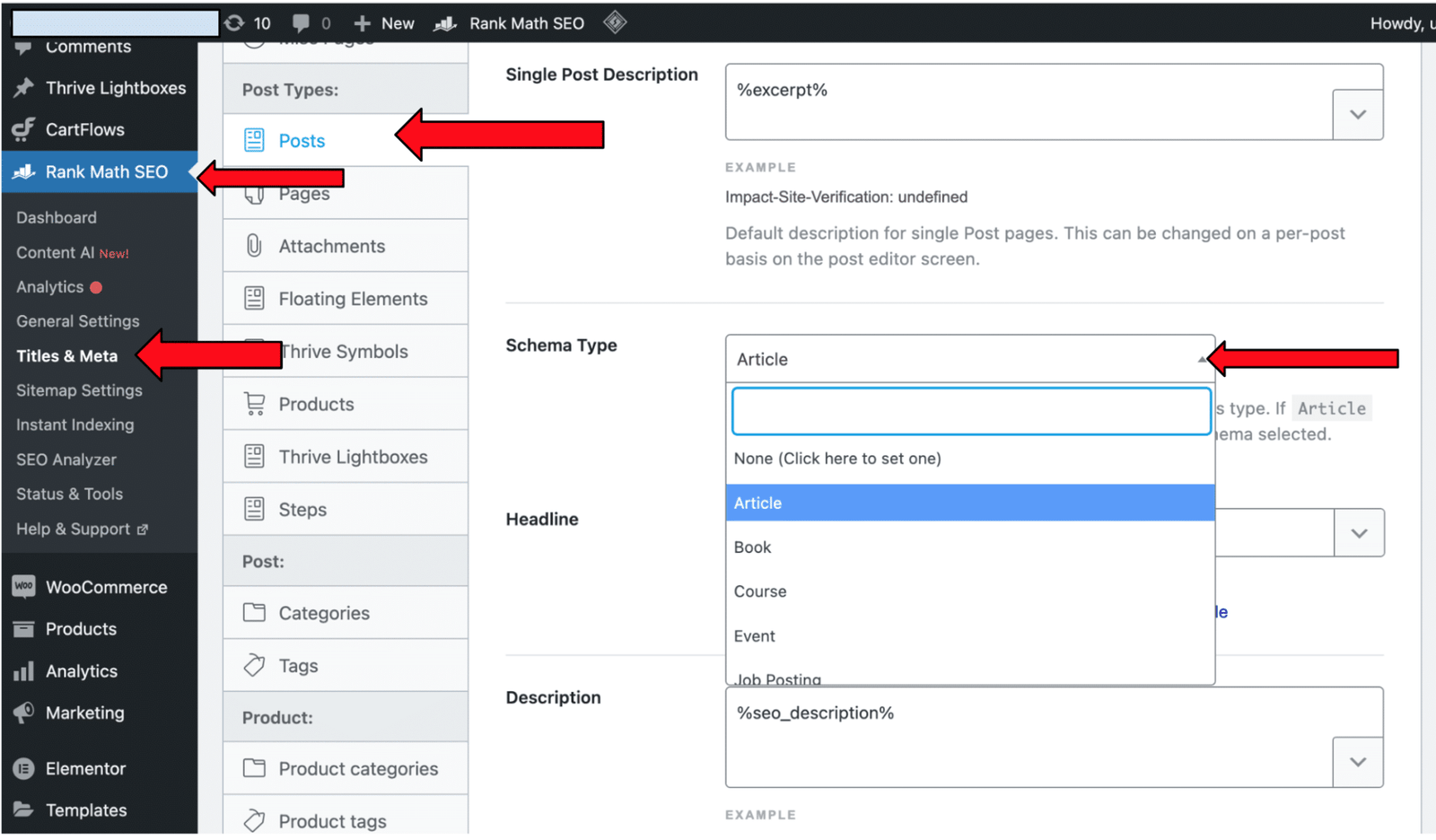
This is your safety net. Now for the fun part.
The Real Magic: Specific Schema for Specific Content
Your default is just a starting point. The real power comes from overriding that default with a more specific, more powerful Schema type on a post-by-post basis.
When you're in the WordPress editor for any post or page, just open the Rank Math panel and navigate to its Schema tab. From there, you can choose the perfect markup for that specific piece of content.
Here are the heavy hitters:
Writing a review? Use this. You can add a star rating, and Rank Math will structure the data so those stars can show up directly in the search results. It's an instant credibility booster.
Essential for eCommerce, but also fantastic for single product reviews. You can add the price, availability, and ratings.
If you have a page with a series of questions and answers, this is a must. It allows Google to display your questions as interactive dropdowns in the SERPs, taking up more space and answering user questions immediately.
Have a food blog? This Schema lets you specify prep time, cook time, calories, and ratings, all of which can appear in rich search results.
Using the right Schema for the job is how you move from being just another blue link to becoming a rich, informative, and irresistible result.
Rank Math offers a vast array of options. While review, recipe, article, product, and FAQ page schemas are popular, Rank Math supports many more, including Event, HowTo, Course, Job Posting, Local Business, Person, Video, Software Application, Service, and Book to name a few, giving you extensive control over how your content appears in search results.
Bonus: Use the Schema Generator to Stand Out
Ready for the advanced move?
Sometimes, one piece of content serves multiple purposes. A classic example is a blog post that also reviews a product. So is it an "Article" or a "Product"?
With Rank Math's Schema Generator, the answer is: it's both.
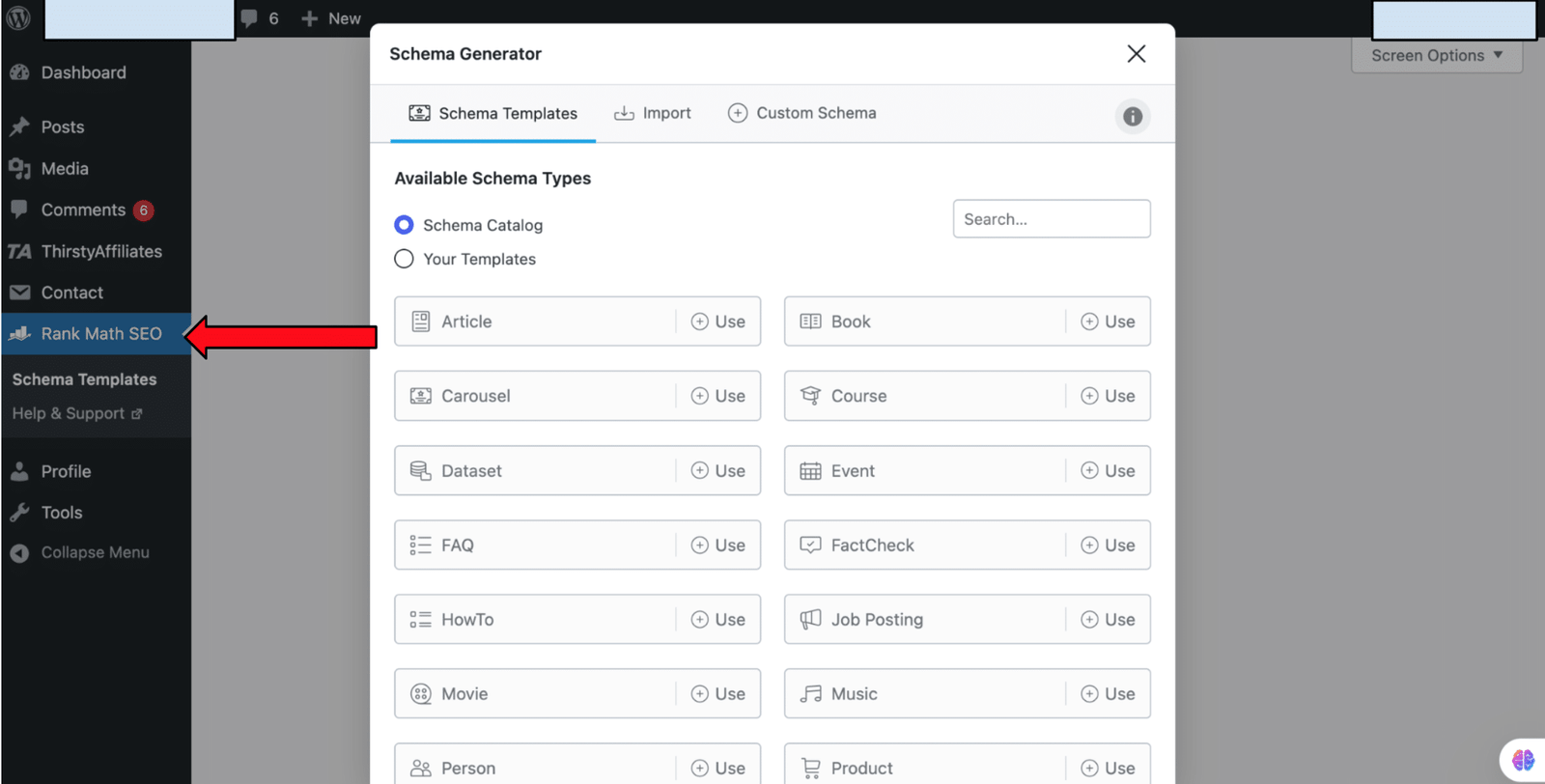
Inside the Schema tab of the editor, you can use the generator to add multiple Schema types to a single page. You can tell Google that this URL is primarily an Article, but it also contains a Review, and it answers several FAQs.
This is how you paint a complete, detailed picture for search engines. While your competitors are sending one-dimensional signals, you're providing a rich, layered story about your content.
And in the game of SEO, the one with the better story wins.
Step 6: Handing Google a Perfect Map to Your Content
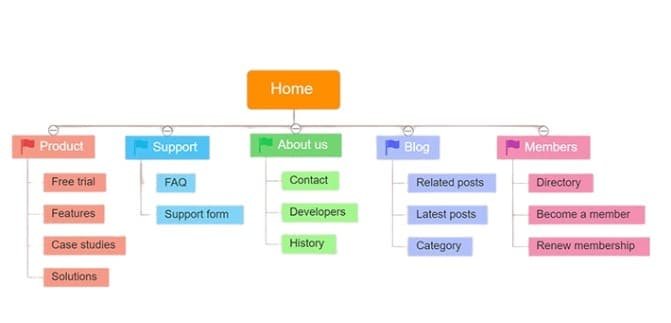
Think of Google's crawler as the world’s most important tourist.
It shows up at your website, looking for the good stuff. Do you let it wander around aimlessly, hoping it eventually stumbles upon your cornerstone articles and most valuable pages?
Or do you meet it at the door and hand it a perfectly organized, up-to-date map?
That map is your XML Sitemap. It's not just a file; it's a direct line of communication. It tells search engines, "Here are all the pages I'm proud of. Here's when I last updated them. Please pay attention to these."
Ignoring your sitemap is an unforced error. Rank Math makes it easy to get it right.
Fine-Tuning Your Sitemap Settings
You can find the controls for this under Rank Math SEO > Sitemap Settings. The defaults are pretty good, but we're here for maximum impact, not "pretty good."
Here’s what you need to confirm:
Include Images: Make sure this is ON. Image search is a massive, often untapped, source of traffic. By including images in your sitemap, you're explicitly telling Google to index them and show them to the world. Don't leave this traffic on the table.
Public Post Types (Posts, Pages): These should, of course, be included. This is the core content of your site.
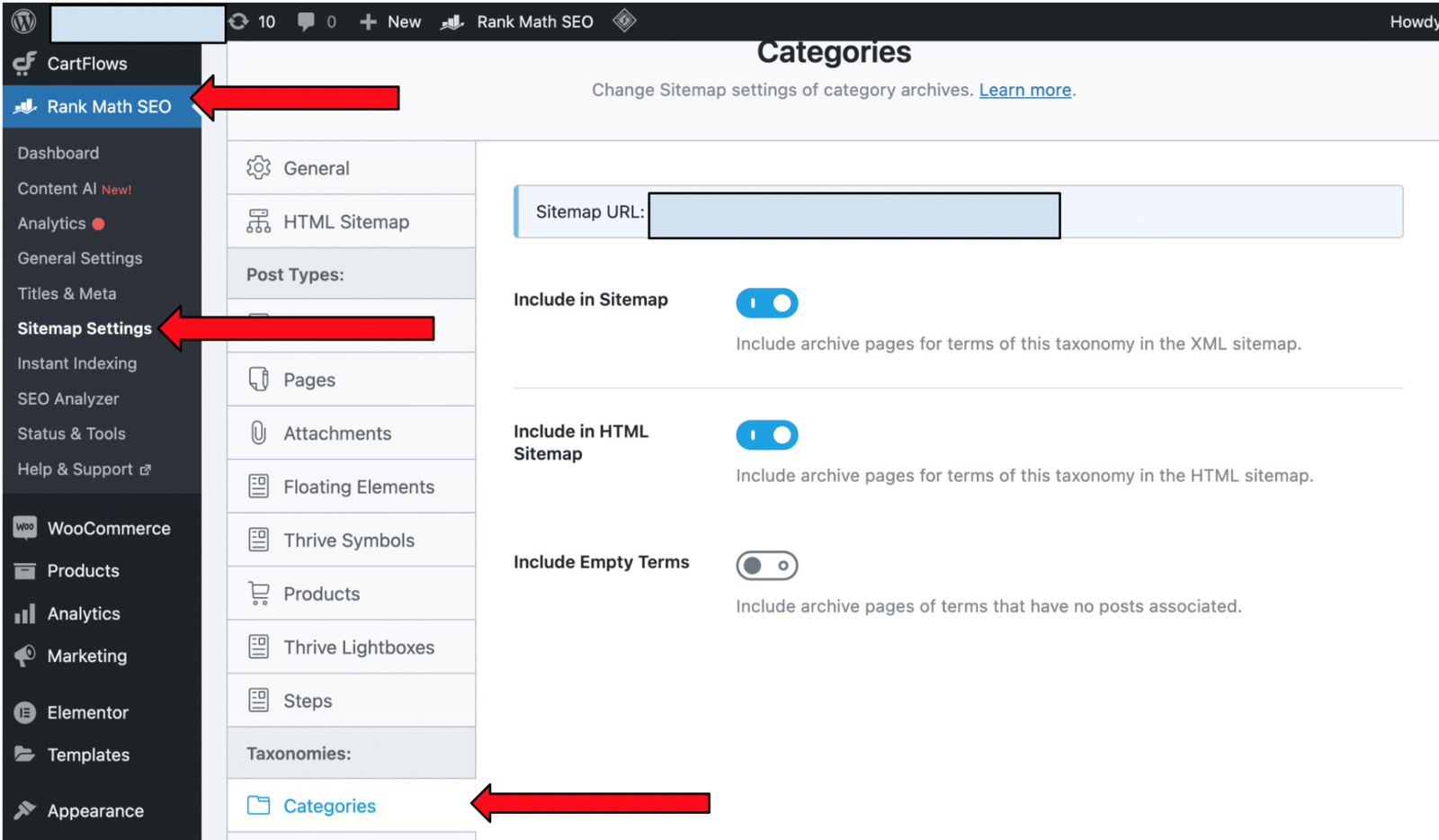
The rule is simple: If a URL contains unique, valuable content that you want someone to land on from a search, include it. If it's just a grouping of other content, exclude it.
The Final Step: Submitting Your Map to Google
A map is useless if the person who needs it never sees it. The final step is to hand-deliver your sitemap URL to Google.
First, find your sitemap URL. Rank Math makes this easy. At the very top of the Sitemap Settings page, it tells you: "Your sitemap index can be found here: yourdomain.com/sitemap_index.xml". Copy that link.
Log in to your Google Search Console account.
In the left-hand menu, under the "Indexing" section, click on Sitemaps.
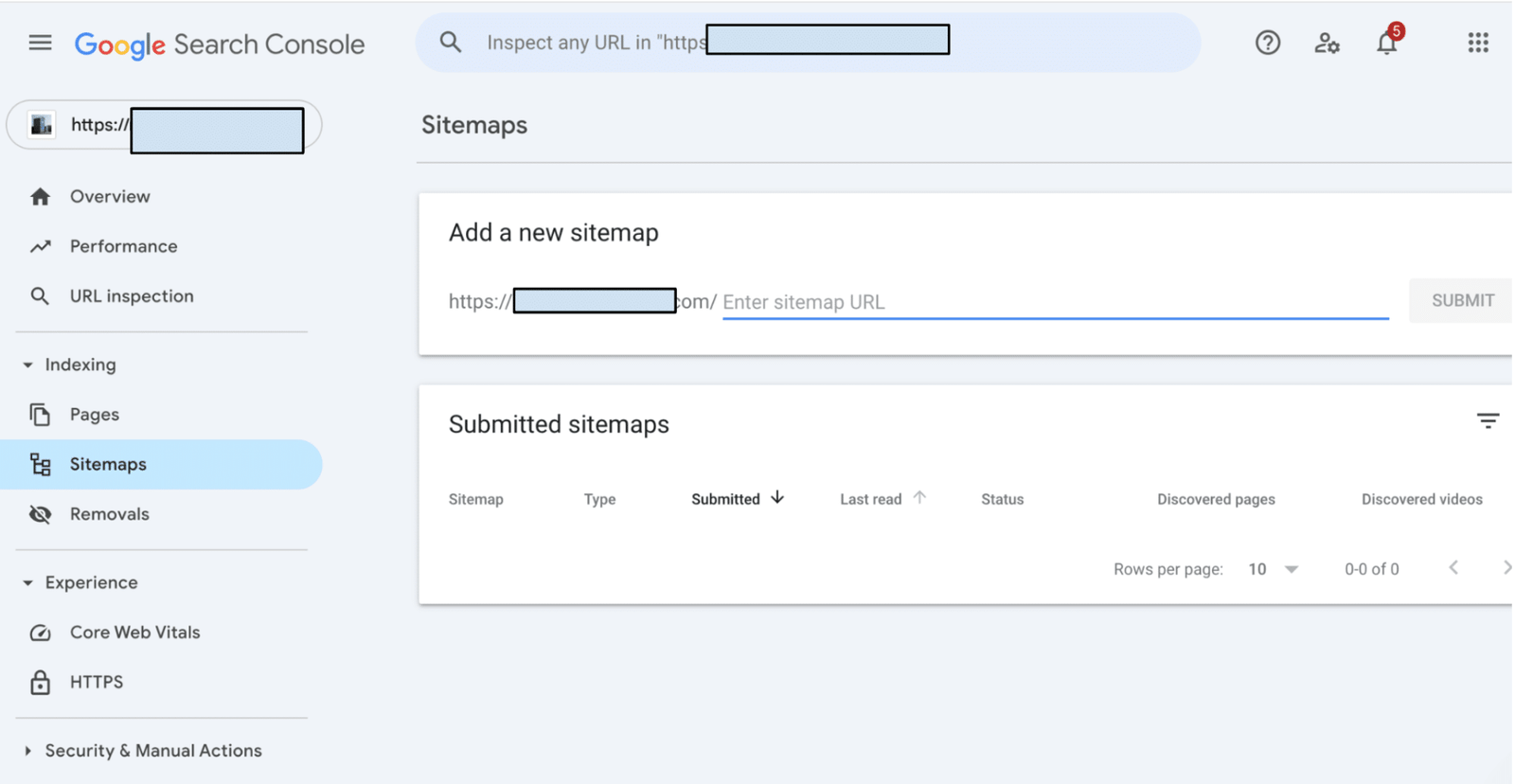
That's it. You've done it.
You’ve just officially told Google how to find all your important content, ensuring that your best work gets indexed faster and more reliably. You've removed the guesswork.
Now that we’ve optimized your site’s structure, it's time to focus on the content itself.
Step 7: Fine-Tune Your Titles & Meta Descriptions to Win the Click
Let's talk about the most important 60 characters on your entire website.
Your page title.
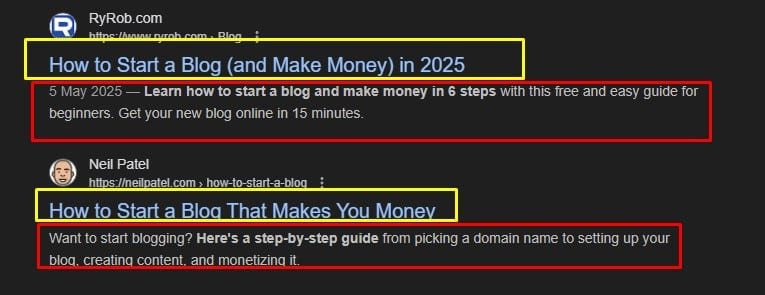
You can have the best content in the world, backed by a perfectly configured site. But when your page appears in the search results, it's sitting right next to nine other blue links.
Your title is your one and only shot to earn the click. If your title is weak, your content is invisible.
This section is about making sure your titles and descriptions don't just exist—they persuade. You'll find these settings in Rank Math SEO > Titles & Meta.
Crafting the Perfect Title Formula
You can't manually write a perfect title for every single page on your site, especially as it grows. You need a smart, automated formula that works 99% of the time.
Navigate to the Posts tab (and then do the same for Pages). You'll see a field called "Single Post Title." This uses variables to build your title structure.
Here’s the formula I recommend for most sites:
%title% %sep% %sitename%
Let's break that down:
%title% is the headline of your actual post (e.g., "How to Set Up Rank Math Pro").
%sep% is the separator character you chose (like a pipe | or a dash -).
%sitename% is the name of your website (e.g., "My Awesome Blog").
The result looks like this: How to Set Up Rank Math Pro | My Awesome Blog
Why this formula? It’s clean. It’s professional. It puts the most important keywords first, and it reinforces your brand with every single search impression. Set this as your default, and you've already won half the battle.
But a formula is for the masses. Your most important articles deserve a custom touch. For those, you'll override this default right in the post editor to craft something even more compelling.
Your Meta Description: The 160-Character Sales Pitch
First, let's dispel a common myth: Google doesn't use the keywords in your meta description as a direct ranking factor.
So you can ignore it, right? Absolutely not.
Here’s what Google does watch obsessively: Click-Through Rate (CTR). If a lot of people click your result, it signals to Google that your page is a great answer to their query. And a higher CTR can absolutely lead to higher rankings.
Your meta description is your primary tool for boosting that CTR. It’s the short sales pitch right under your title. It's your job to make it irresistible.
While you'll write these on a per-post basis, here are the rules to live by:
Include a Call to Action (or an Emotional Trigger): Don't just describe what the page is. Tell them what to do. Use phrases like "Learn how," "Find out why," "Get the free template," or "Avoid these critical mistakes." Give them a reason to click now.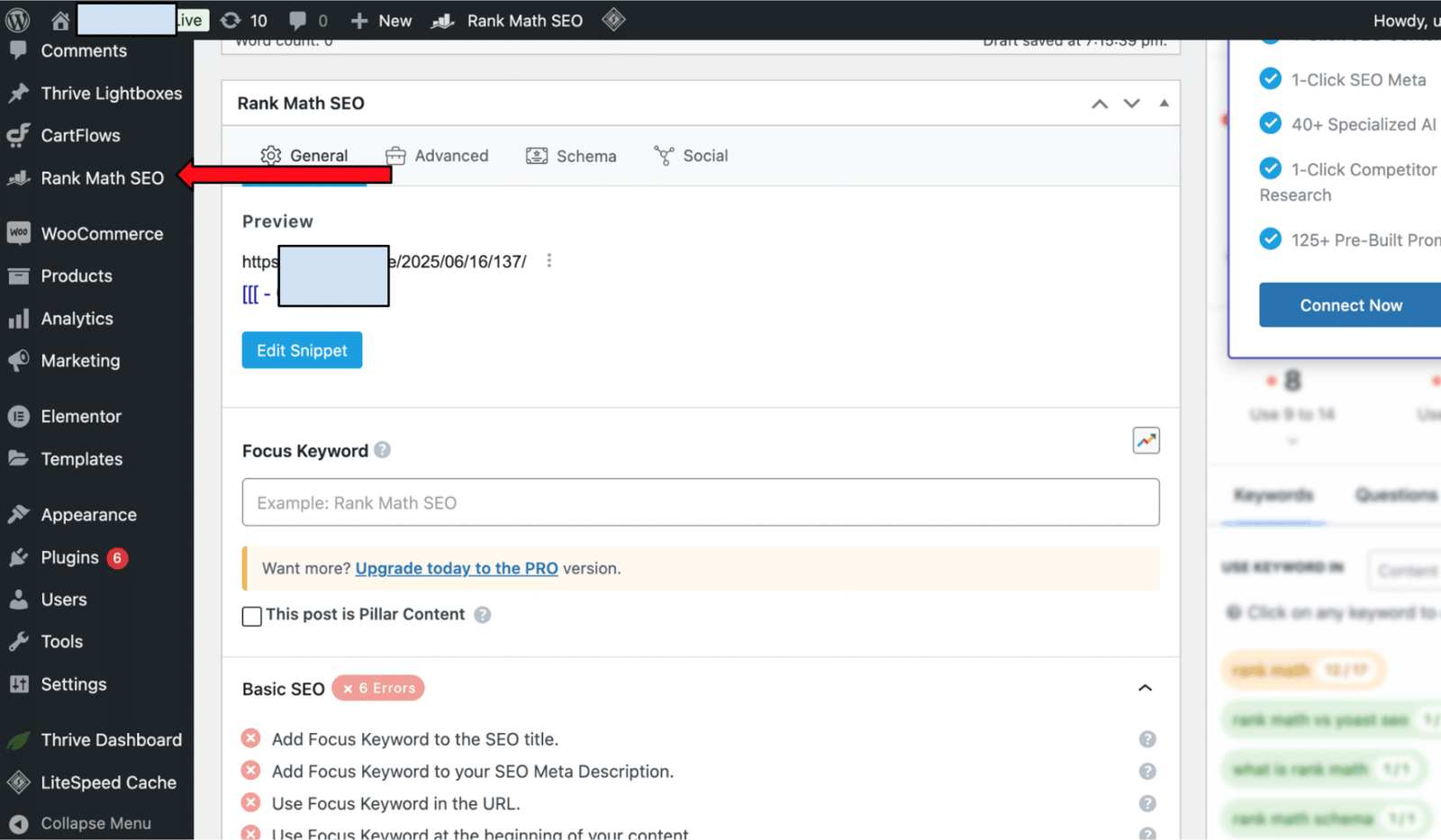
This isn't just administrative work you have to check off a list. This is copywriting for your most important audience.
Now that your presentation is dialed in, it’s time to ensure the content itself lives up to the promise.
Step 8: Deploying the Pro Arsenal for a Competitive Edge
Up to this point, we’ve built a rock-solid SEO foundation. Anyone with the free version of Rank Math can follow along.
But you didn't settle for the free version. You invested in Pro.
This is where you collect your return on that investment. The Pro features aren't just shiny add-ons; they are specialized tools designed to solve specific, high-value problems. Activating them is easy in the Rank Math > Modules section. Knowing when and how to use them is the secret.
Let's look at the heavy hitters.
Content AI: Your Unfair Writing Advantage
Consider using Rank Math's Content AI whenever you're creating a new, important piece of content. This includes blog posts, landing pages, product descriptions, or any page you want to see perform well in search results and attract organic traffic. It helps you build a strong foundation for your content from the very beginning.
You're looking to streamline your content creation with Rank Math's Content AI. It's a fantastic tool to help your articles rank well and connect with readers.
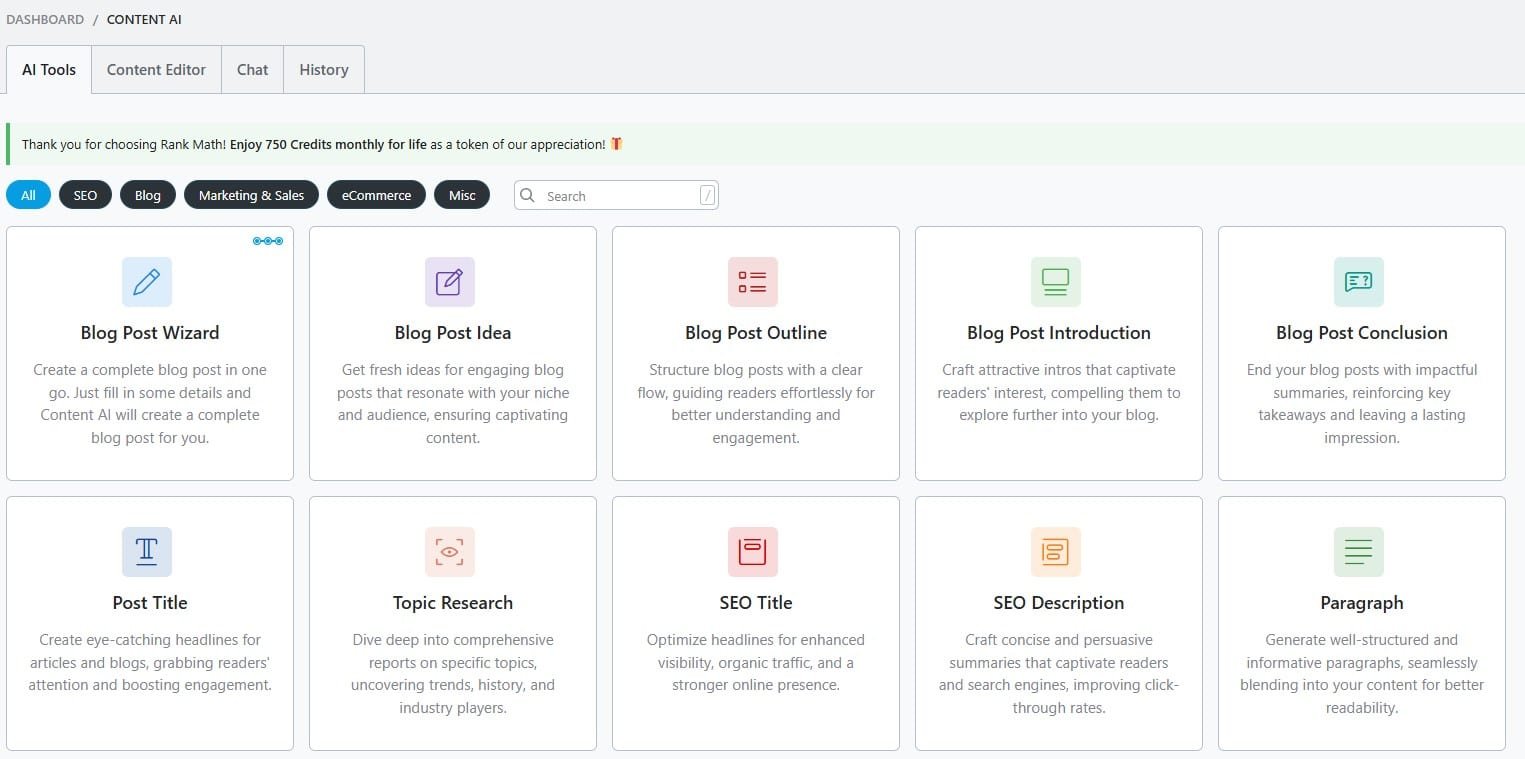
When to Use It
Consider using Rank Math's Content AI whenever you're creating a new, important piece of content. This includes blog posts, landing pages, product descriptions, or any page you want to see perform well in search results and attract organic traffic. It helps you build a strong foundation for your content from the very beginning.
How to Use It for Best Results
Here's how to get the most out of it in your WordPress editor:
Input your main topic: Start by typing your primary keyword or topic into the Content AI field. This tells Rank Math what your content is about.
Review the blueprint: Rank Math will then analyze top-ranking content for your chosen topic. It'll give you data-driven suggestions, including recommended word count, key headings, important keywords to include, and even ideas for internal and external links.
Integrate naturally: Use these suggestions as a guide, not a strict checklist. Weave the insights naturally into your writing to create comprehensive and valuable content. Don't force keywords where they don't fit.
Aim for a high score: As you write, Rank Math provides a real-time Content AI score. While a high score indicates good optimization, always prioritize readability and delivering genuine value to your audience.
Explore additional features: Don't forget to check out other AI-powered tools within Rank Math, like "RankBot" for quick research or generators for meta titles and descriptions.
This isn't about writing for robots. It's about letting the data tell you what human readers (and by extension, Google) expect to see in a top-tier article on your topic. It removes the guesswork and ensures you create a comprehensive resource, not just another blog post.
Redirection Manager: Never Lose Traffic from a Broken Link Again
When to use it:
How to use it: Let's say you update an old post and give it a better URL. The old link is now dead. Any traffic from old bookmarks, social shares, or external links is lost. With the Redirection Manager, you simply tell Rank Math: "Hey, if anyone tries to visit this old URL, please send them to this new URL instead." It's a simple, permanent fix that preserves your link equity and user experience. It's an absolute must-have for any living, breathing website.

The beauty of RankMath's redirection system lies in its simplicity and power. Instead of manually editing .htaccess files or relying on complex server configurations, you can set up redirects with just a few clicks. Whether you're dealing with a single page move or a massive site restructure, the tool handles everything smoothly.
Local SEO & Google Business Profile: Dominate Your Neighborhood
For any business with a physical location or one that serves a specific geographic area – think plumbers, dentists, consultants, or restaurants – mastering Local SEO and your Google Business Profile is absolutely crucial. This isn't just about showing up in search results; it's about dominating your neighborhood and becoming the go-to choice for local customers.

When to Leverage Local SEO & Google Business Profile
If your business relies on customers finding you locally, whether they walk into your shop, call for a service at their home, or seek out your expertise within a certain radius, then this is for you. It's essential for brick-and-mortar stores, local service providers, and anyone who's looking to connect with a specific regional audience.
How to Maximize Your Local Presence with Rank Math
Rank Math empowers you to optimize for local searches by making sure Google has all the critical information about your business. Here's a streamlined approach to getting the most out of it:
List of Steps
Activate the Local SEO Module: First, ensure the Local SEO module is enabled within Rank Math. This unlocks a suite of settings specifically designed to boost your local visibility.
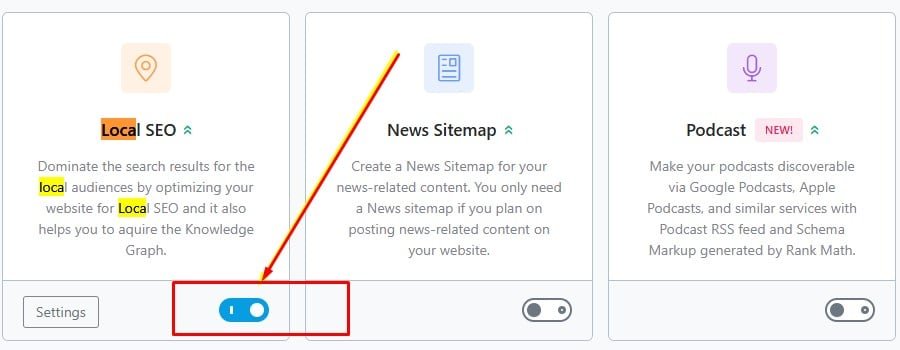
Complete Every Business Detail: Navigate to the Local SEO settings and meticulously fill out every single field. This includes your precise business name, full address, primary phone number, and accurate opening hours. This comprehensive data forms the bedrock of your local online presence.
Harness Local Business Schema: What Rank Math does behind the scenes is incredibly powerful: it automatically converts all this information into perfect LocalBusiness Schema markup. This structured data is a massive signal to Google, clearly communicating that you are a legitimate local entity. It helps Google understand who you are, what you do, and where you're located, making your business more discoverable for relevant local searches.
Target the "Map Pack": The ultimate goal of this optimization is to secure a coveted spot in Google's "Map Pack" (also known as the Local Pack or 3-Pack). This prominent display, appearing at the very top of local search results with a map and three business listings, is arguably the most valuable real estate for any local business. It's where potential customers often look first for quick information, directions, and contact details. By providing Google with accurate and consistent LocalBusiness Schema, you significantly increase your chances of appearing in this high-visibility section, driving more direct inquiries and foot traffic.
Rank Math simplifies the complex process of Local SEO. By ensuring your business information is meticulously accurate and properly formatted with LocalBusiness Schema, you're giving Google exactly what it needs to showcase your business to local customers searching for your products or services.
Video SEO: Get Your Videos Seen on Google
When to use it: Whenever you embed a video in your content.How to use it: This module works almost automatically. Once activated, it detects videos embedded in your posts and wraps them in the correct VideoObject Schema. This gives Google all the details—the title, description, and thumbnail—which dramatically increases the chance of your video showing up with a rich thumbnail in the video search results. If video is part of your content strategy, turning this on is non-negotiable.
WooCommerce SEO with Rankmath
If you're running an online store powered by WooCommerce, you know how crucial it is for your products to be seen. That's where Rank Math's WooCommerce SEO comes in – it's designed to give your entire shop, especially your product pages, a significant boost in search engine visibility.
For an online store powered by WooCommerce, Rank Math acts as a sophisticated layer, primarily by injecting structured data and providing granular control over meta elements, which are critical for search engine understanding and display.
Automated Product Schema Implementation:
Upon activation of the WooCommerce module, Rank Math hooks into WooCommerce's product data. It dynamically generates and injects Product Schema markup directly into the HTML of each product page.
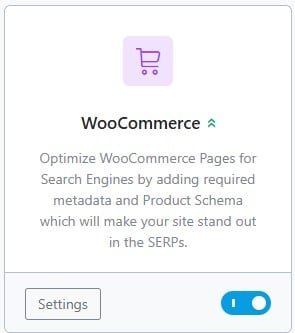
This Schema typically includes properties such as name, image, description, sku, brand, offers (containing price, priceCurrency, availability), and aggregateRating (for reviews).
This structured data allows search engines to parse product details with high precision, enabling rich snippets in SERPs (Search Engine Results Pages) that display price, stock status, and star ratings, significantly increasing click-through rates.
For variable products, Rank Math intelligently generates Offer entities for each variation, ensuring that specific prices and availability for different options are correctly communicated to search engines.
It also supports advanced identifiers like GTIN (Global Trade Item Number), MPN (Manufacturer Part Number), and ISBN, which are crucial for product identification in large databases like Google Shopping.
Granular Meta Control for Archive Pages:
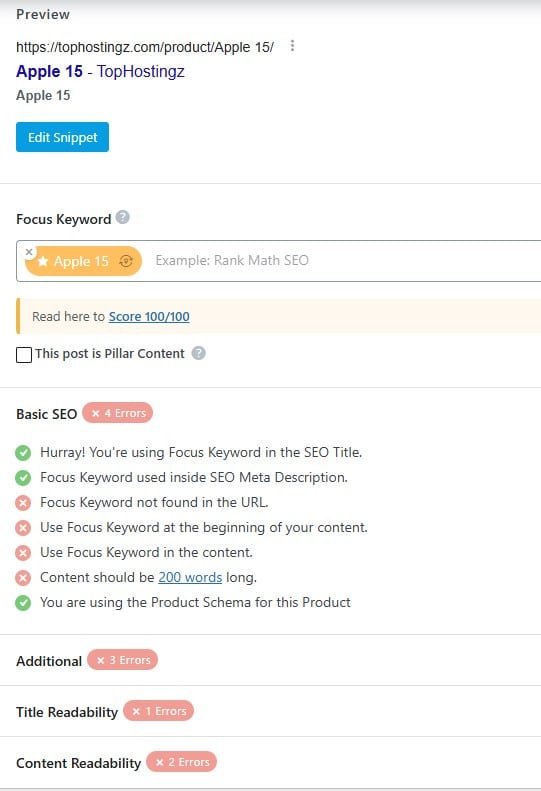
Enhanced Content Analysis for Products:
Step 9: Close the Loop with SEO Analytics (The Work Is Never Done)
Congratulations. You’ve configured your website’s SEO engine with more care and precision than 99% of your competitors.
So, are we done?
Not even close.
Because great SEO isn't a "set it and forget it" task. It's a continuous feedback loop. You execute a strategy, you measure the results, you learn, and you improve. Forgetting to measure is like a ship's captain setting a course and then going to sleep without ever looking at the compass again.
This is where Rank Math's built-in Analytics dashboard becomes your command center.
Assuming you connected your Google accounts back in Step 2, this dashboard is now populated with pure gold. It pulls the most important data from Google Search Console and Google Analytics and puts it right where you need it—inside your WordPress admin.
Navigate to Rank Math SEO > Analytics. Here’s what you need to pay attention to.
1. Track Your Keyword Rankings
The dashboard shows you which keywords your site is ranking for, your average position, and how many clicks you’re getting. This isn't just an ego boost; it's a goldmine for insights.
Look for "Striking Distance" Keywords: Are you ranking at position #8 for a high-value keyword? That’s great news. It means you’re on the first page, but you have room to grow. Your next action is clear: go back to that page, improve the content, build a few internal links to it, and push it into the top 3 where the real traffic is.
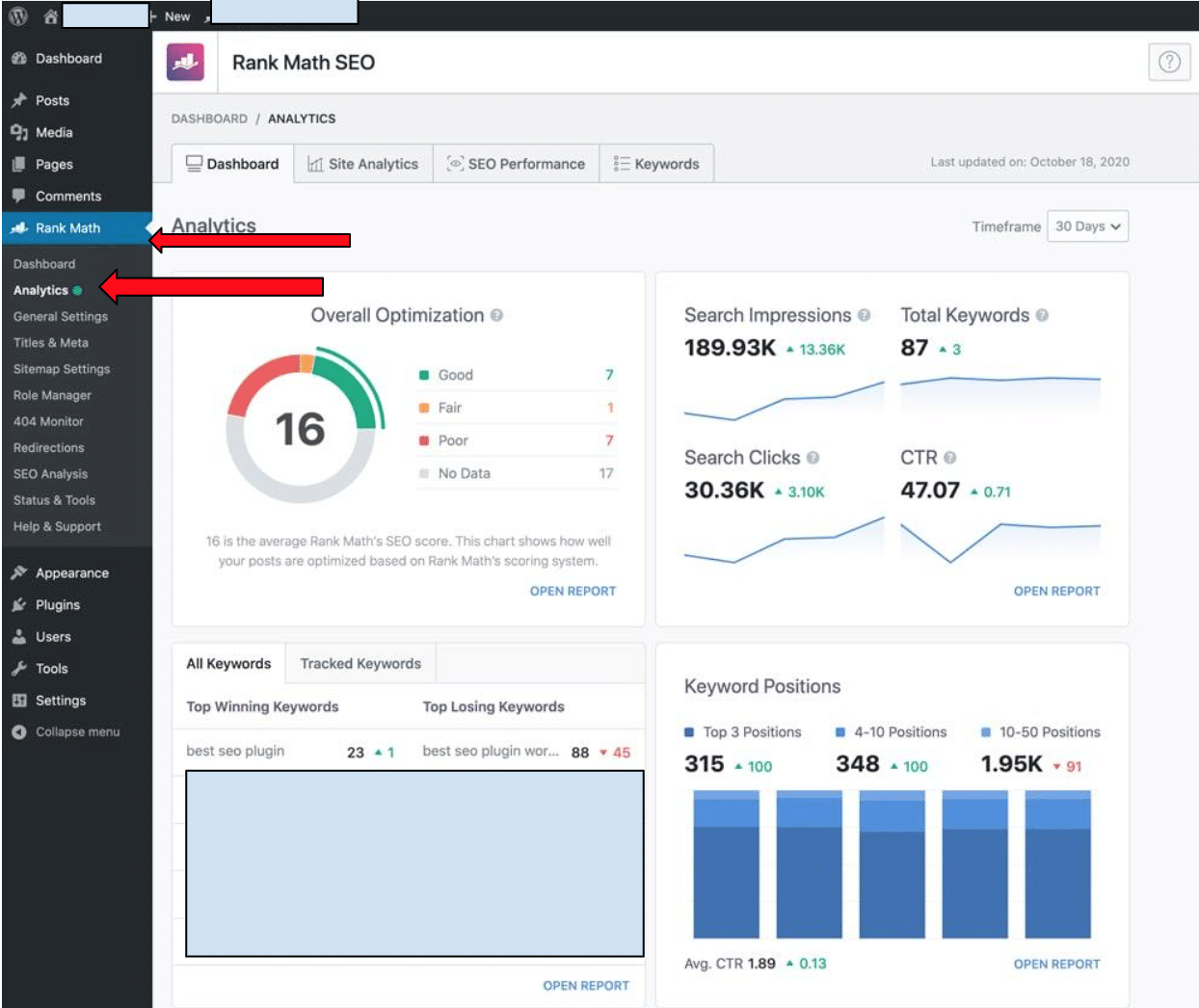
2. Monitor Your Indexing Status
Under the Index Status tab, you can see exactly which pages Google has successfully indexed.
Pay close attention to any pages marked with an "Error" or "Excluded" status. Rank Math will tell you why Google is ignoring them. Is it a "noindex" tag you forgot to remove? A 404 error? This report allows you to spot and fix technical issues before they do any real damage.
3. Act on the Data (This is The Part That Matters)
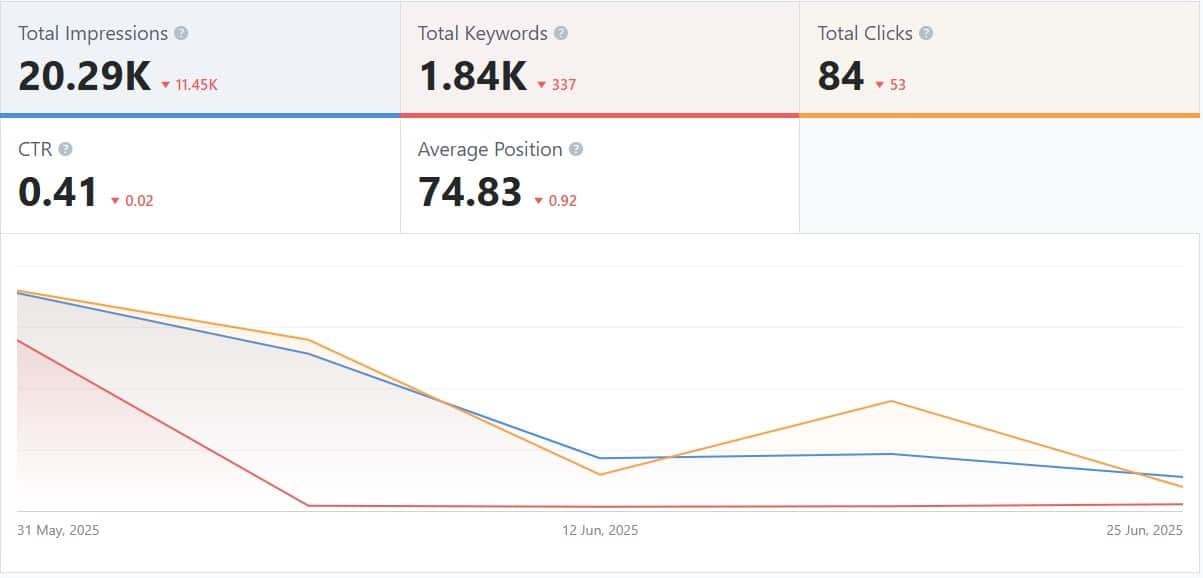
Data is useless without action. Your Analytics dashboard isn't a report card; it's a to-do list.
- If a page's rankings are dropping... it's a sign your content might be getting stale or a competitor has published something better. It's time to schedule a content update.
- If a page has high impressions but a low Click-Through Rate (CTR)... it means your title and meta description are failing to win the click. Go back to Step 7 and write a more compelling pitch.
- If a page has zero impressions... it means Google either doesn't know it exists or doesn't think it's relevant for anything. Check that it's in your sitemap and build some internal links to it from your more popular pages to pass it some authority.
This ongoing process of analysis and optimization is what separates amateurs from professionals. The initial setup got you in the race. This final step is how you win it.
Bonus: The Habits of Ongoing Optimization
The heavy lifting is done. Your site is now a finely tuned machine, configured with more strategic intent than ever before.
But a machine, no matter how well-built, requires maintenance to perform at its peak. SEO isn't a project you finish; it's a process you manage.
Here are four simple habits to adopt that will ensure the work you've just done continues to pay dividends for years to come.
1. Establish a 15-Minute Weekly SEO Review
You don't need to spend hours buried in data. Just set aside 15 minutes every Monday morning to check two things in your Rank Math Analytics dashboard:
- Your Winners: Which posts are gaining rankings and traffic?
- Your Losers: Which posts are slipping?
This simple check-in keeps you connected to your performance and will dictate your priorities for the week. It’s the difference between reacting to problems and proactively seizing opportunities.
2. Use Content AI to Revive Underperforming Posts
During your weekly review, you found a post stuck at the bottom of page one for a valuable keyword. It has potential, but it's not breaking through.
Don't just let it sit there.
Go back into that post, open the Content AI tool, and see how it scores. The AI will likely reveal exactly what's missing—a few related keywords, a higher word count, or some specific questions you failed to answer. Spend an hour making those improvements. This is the single fastest way to turn a B-grade article into an A-grade traffic magnet.
3. Hunt Down and Fix 404 Errors
A 404 "Not Found" error is a broken promise. It's a dead end for your visitors and a negative signal to Google.
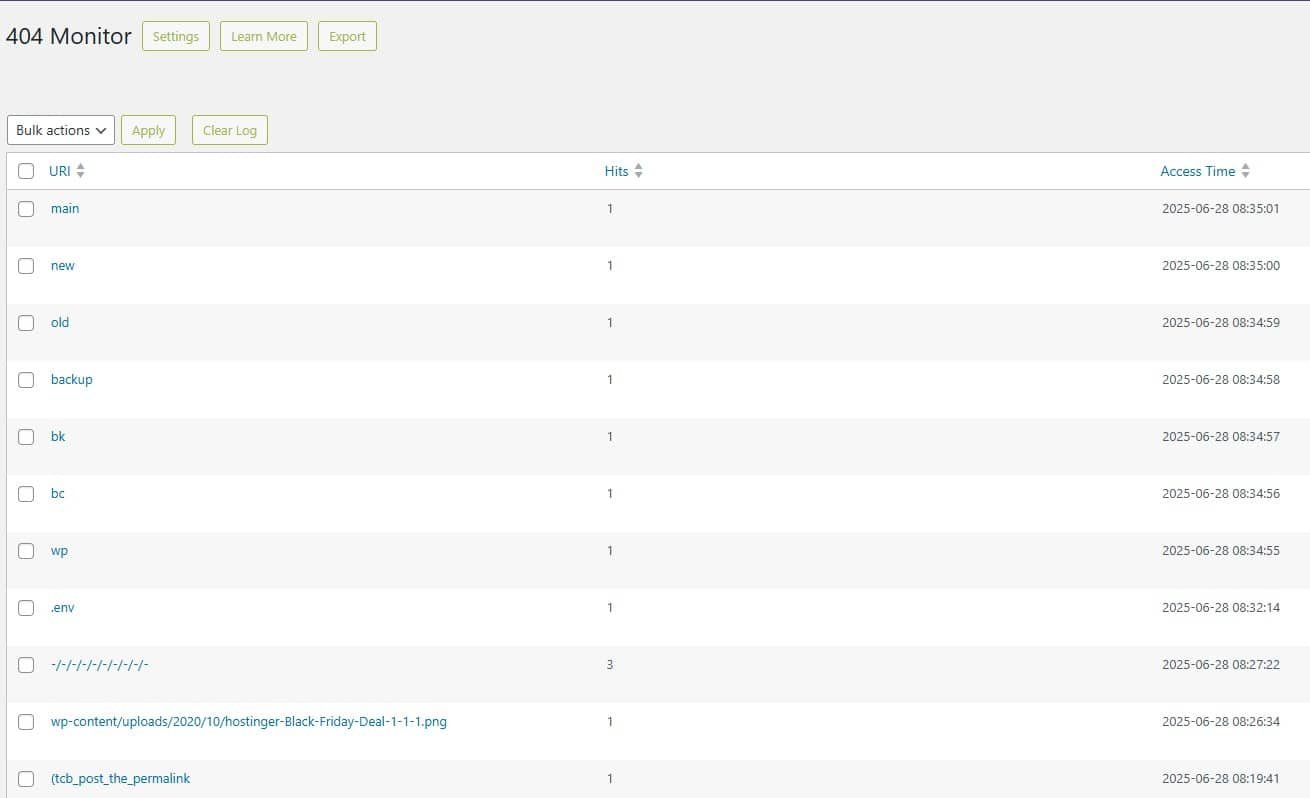
Once a month, navigate to Rank Math > Analytics > Index Status and look for any 404 errors. Rank Math's Redirection Manager is your tool to fix them. If a visitor is landing on a dead link because you changed the URL, create a 301 redirect to the new page. If the content is gone for good, redirect them to the next most relevant page or your blog's category page. It's digital housekeeping that protects your authority.
4. Always Keep the Plugin Updated

This sounds obvious, but its importance can't be overstated.
When you see an update notification for Rank Math, don't ignore it. The digital marketing landscape shifts constantly. Google's algorithm changes. An update isn't just about bug fixes; it's about adapting to that new landscape. The Rank Math team is constantly refining the tool to align with best practices, and sometimes, they release powerful new features.
Staying updated means your toolkit is always as sharp as it can possibly be. It’s a simple click that ensures you’re never left behind.
Conclusion
And there you have it: how to Set up Rank Math Pro for maximum SEO impact.
The difference between an amateur and a professional isn't the tool they use. It's how they use it.
You didn't just install a plugin today. You took command of your website's SEO. You moved beyond the generic defaults that deliver generic results and built a system designed for one purpose: to get your content seen by the people who need it most.
From dialing in your Schema to handing Google a perfect map of your site, you've configured an engine for growth. You’re no longer guessing. You're operating with intent.
This guide on how to Set up Rank Math Pro for maximum SEO impact is your playbook. Don't let it gather digital dust. Bookmark it. Refer back to it when you're launching a new section of your site or reviving an old post. The real work—and the real results—happen over time.
But I know that theory is one thing, and your specific site is another. Sometimes you just need a second pair of eyes.
So here's the deal.
Need help choosing your settings? Drop your blog URL in the comments and I’ll give you a few quick tips.
Now, go put this knowledge to work.

Rank Math
Is your website ready to truly dominate search results? The free version of Rank Math gets you started, but Rank Math PRO is where serious growth happens. Unlock advanced analytics, track your keyword rankings in real-time, get deeper AI-powered content insights, and fully optimize your WooCommerce store and local business listings.
Affiliate Disclosure
This article may contain affiliate links: means , if you click on one of these links and make a purchase ( which we appreciated ), then I'll receive a small commission without affecting the original price ( without costing you anything extra ).



